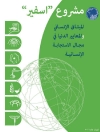This book explores the intersections between wearable objects and human health, with particular emphasis on how artists and designers are creatively responding to and rethinking these relations. Addressing a rich range of wearable artefacts, from mobility aids and prosthetics to clothing and accessories to digital health tracking devices, its themes include care and cure; wellness culture and the commoditization of health; and the complex interactions between (human) bodies and (non-human) objects. With a theoretical framework inspired by the work of materialist thinkers including Sherry Turkle, Bruno Latour and Jane Bennett, and bringing the disciplinary fields of fashion studies, art and design practice, and medical and health humanities into dialogue for the first time, this volume draws attention to the complex agencies entangled in the things we wear, and situates fashion and art in relation to broader cultural and historical contexts of health, illness and disability.
Daftar Isi
Introduction.- 1. Collaborating.- 1.1. Jana Melkumova-Reynolds, On Crutches, Choreography and (Crip) Care: Curative objects and palliative things in two performance pieces. -1.2. Emily Beaney, Breaking the Fall.- 1.3. Alison L Goodrum, Sitting Pretty: A dress history of the side-saddle habit, ‘L’-shape design and adaptive wearables.- 1.4. Sonia Bernac, The Itches: embodiment in in the age of technological entanglement.- 2. Covering.- 2.1. Christopher M. Rudeen, Securing a Place in the Sun: Clothing, Exposure, and Health.- 2.2.- Andrew Groves, Palliative Prototypes or Therapeutic Functionality? Examining C.P. Company’s Urban Protection Collection.- 2.3. Rosie Broadhead, Skin and textile interaction and the future of fashion as therapeutics.- 3. Controlling.- 3.1. Dawn Woolley, Desire Lines: Quantified-Self-Portraits produced with a fitness tracking watch.- 3.2. Alanna Mc Knight, “Health, Comfort, and Elegance”: The Shocking Trend of Electric Corsets.- 3.3. Lucie Armstrong, Office Exercises.- 4 Communicatin.- 4.1. Garry Barker, Votives and charms: materialising health-related narratives through “sacred” objects.- 4.2 Katharina Ludwig, (Ad)Dressing Wounds.- 4.3 Anna Jamieson, Crazy Jane Hats and Maria Medallions: Consuming, Collecting and Containing Love’s Madness.
Tentang Penulis
Dawn Woolley is an artist and Research Fellow at Leeds Arts University, UK. Her book
Consuming the Body: Capitalism, Social Media and Commodification was published in 2023. Recent solo exhibitions include “Joy and Revolution: Rebel Selves” at Diskurs Gallery, Berlin (2023); and “Consumed: Stilled Lives” at bildkultur Gallery, Stuttgart (2022) and Perth Centre for Photography, Australia (2021).
Fiona Johnstone is Assistant Professor in Visual Medical Humanities at Durham University, UK. She is the author of AIDS & Representation (2023) and the co-editor of Anti-Portraiture (2020) and Art & the Critical Medical Humanities (forthcoming). Ellen Sampson is an artist and Senior Research Fellow in Design at Northumbria University, UK. Her book
Worn: Footwear Attachment and the Affects of
Wear was published in 2020. She is co-founder of the Fashion Research Network, an interdisciplinary network for scholars working on fashion, textiles and dress.
Paula Chambers is Subject Leader in Fine Art at Leeds Arts University, UK. Recent exhibitions include “Inconvenient Bodies” at Hošek Contemporary, Berlin (2023) and “Material Nomads” as part of Momentum 12, Moss, Norway (2023). She has chapters included in Feminist Art Activisms and Artivisms (2020), Feminist Visual Activism and the Body (2021) and An Artist and a Mother (2023).












